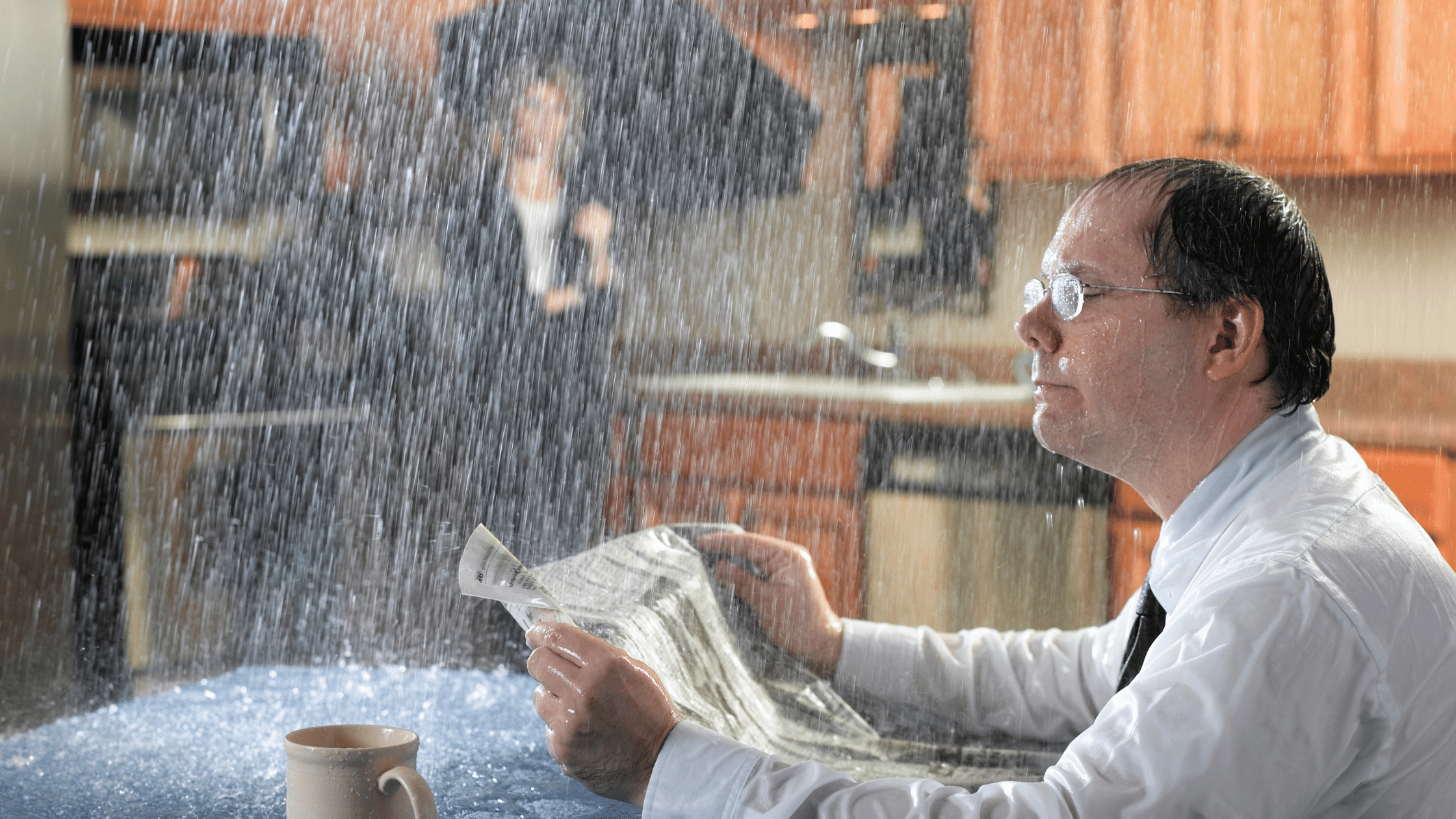3 Steps to Minimize Damage from Roof Leaks

BC gets lots of rain, and there’s always more in the forecast. All this rain may be great for our gardens and lawns, but rainy weather also means roof leaks. Unfortunately, when you discover them, it’s often too later. When rain is causing interior damage most people panic, pick up the phone and try to get a roofer there as quickly as possible. But what can you do to temporarily stop the leaks from causing more damage until the roofing contractor arrives?
Work to Minimize Interior Damage
Usually, a leak will slowly pool somewhere in your ceiling or attic until it finds somewhere else to go such as a vent or light fixture. After several hours, the leak will spread, causing more damage and making the leak appear worse than it is. Try to locate a bulge in the ceiling or what seems to be the wettest spot (water may be dripping from this spot). Have a bucket nearby to catch the water and poke a small hole in the ceiling. This gives the water an easy way out and will minimize ceiling and drywall damage.
Find the Leak
Grab a flashlight and start looking around the house. usually, your attic is the best place to start. Examine the area above and adjacent to the leak. Look for moisture and/or dripping water. Water from a roof leak will rarely drip straight down from the source of the leak. Carefully check the seams in your roof boards and any beams or trusses for signs of water. Water will generally travel along these lines, sometimes for several feet before it starts dripping down on to the ceiling. Anything penetrating through the roof such as bathroom fans, plumbing cents, etc. should be checked for leaks as well. If you find the leak and can safely access your attic, placing an additional bucket in the attic to catch the leak will help to minimize the damage further.
Maintain Your Repairs
Once you’ve located the leak, continue to catch as much of the water as possible with the buckets, checking them and emptying them as needed. Once the rain stops, running a dehumidifier will speed up the drying process and help prevent mold growth. If the leak is very large, tarping the roof until repairs can be made is an option, but it’s best left for an experienced contractor.
After large storms, reputable contractors tend to get very busy. These steps will help you prevent further damage to your home until a roofing contractor can perform the repairs.

In Awe Roofing Limited is an Award-Winning, family owned and operated Vancouver Roofing Contractor with over 17 years of roofing experience. We serve the entire Lower Mainland area, from Whistler to Chilliwack, employing a team of professional staff members. Our team has won numerous awards including Best of Homestars for the last five years, and Three Best Rated six years in a row. Learn more






















